Only half of UK firms audit suppliers’ ethical behaviour


UK manufacturers could be inadvertently relying upon slave and child labourers in their supply chains because they are not always auditing suppliers and relying only on trust, according to new research.
The report from global supply chain risk management company Achilles found that only 51% of manufacturers are regularly auditing their direct (Tier 1) suppliers in terms of ethics, or checking their claims that they do not use child workers, slaves or conflict minerals. And only 38% of manufacturers are auditing their indirect (Tier 2) suppliers on the same criteria. In addition, around one in five large manufacturers said they are confident in suppliers’ ethical compliance purely because of personal relationships.
Richard Collins, an executive director at Achilles, commented: “This survey shows just how unsure large UK manufacturers actually are about the treatment of people within their supply chains.
“UK manufacturers may well soon have a legal, as well as moral, duty to tackle the use of slave and child labourers in their supply chains. We would urge large businesses to get ahead and map their supply chains to identify exactly who their suppliers are, and then audit each one in terms of business performance and ethics. This will help protect their reputation, bottom line and ultimately, the people at the heart of UK supply chains.”
Picture credit: © Samrat35 | Dreamstime.com
Vote for your sustainability champions!


Voting is now open for this year's 2degrees Champions Awards.
There are 14 categories to vote on which highlight a variety of innovative projects, solutions, organizations and individuals that are making sustainable business happen.
The categories are:
- 2degrees Member of the Year
- Building or Property Project
- Energy & Carbon Management – Long-Term Payback
- Energy & Carbon Management – Short-Term Payback
- External Communications Campaign
- Innovation of the Year
- Internal Engagement
- Personality of the Year
- Social Value
- Solution of the Year
- Supply Chain Management
- Sustainability Champion of the Year
- Waste & Resource Management
- Water Management
Everyone who votes will be entered into a prize draw to win five tickets to the Awards Ceremony which will take place on 9 July at Wembley Stadium.
Voting closes on Friday 18 April.
Vote here.
Recap: Live Chat with Dr. Neil Hawkins, VP of Global EH&S and Sustainability at Dow Chemical Co.
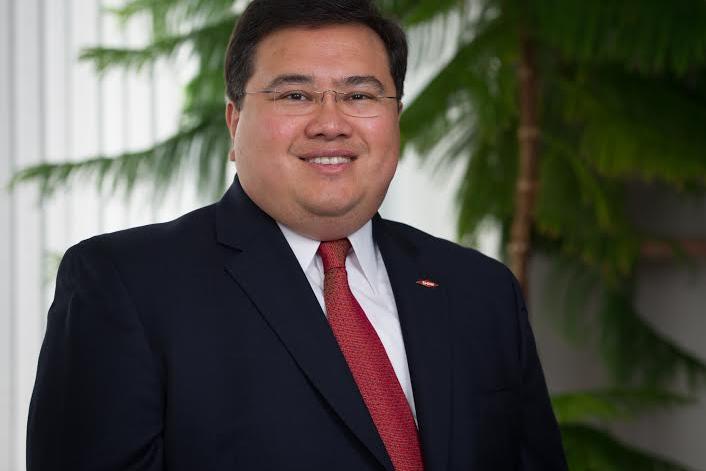

Every Week, TriplePundit takes 30 minutes or so to chat with an interesting leader in the sustainable business movement. These chats are broadcast on our Google+ channel and embedded via YouTube right here on 3p.
On Wednesday, March 12 at 1 p.m. PST / 4 p.m. EST, TriplePundit's Founder and Publisher, Nick Aster, spoke with Dr. Neil Hawkins about sustainability at The Dow Chemical Co.
What are ecosystem services? Ever thought about putting a price on nature? We learned about Dow's work with the Natural Capital Hub, a project recently launched by The Nature Conservancy and Corporate EcoForum promoting natural capital, as well as some of the ways the company is working with nature to improve otherwise expensive and possibly toxic processes like water treatment.
If you missed the conversation, you can watch it right here or on our YouTube channel.
About Dr. Neil Hawkins
As the Corporate Vice President for Sustainability, Dr. Neil Hawkins drives strategy and implementation for Dow’s sustainability and EH&S programs, including the enterprise-wide 2015 Sustainability Goals. Since 1988, he has served at Dow in a broad range of functional, business, and operations roles.
Hawkins is a widely recognized authority on sustainable business practices, environmental policy and win-win solutions for business and ecosystems. He is a board member of numerous organizations and he chairs the strategic advisory council of the University of Michigan’s Erb Institute for Global Sustainable Enterprise. He is also a trustee of The Nature Conservancy Michigan Chapter and a past member of the Science Advisory Panel for Green Chemistry for the States of California and Michigan. Hawkins holds doctoral and master’s degrees from Harvard University, and is also an alumnus of Georgia Tech.
How the Power of Story Can Save Our Oceans
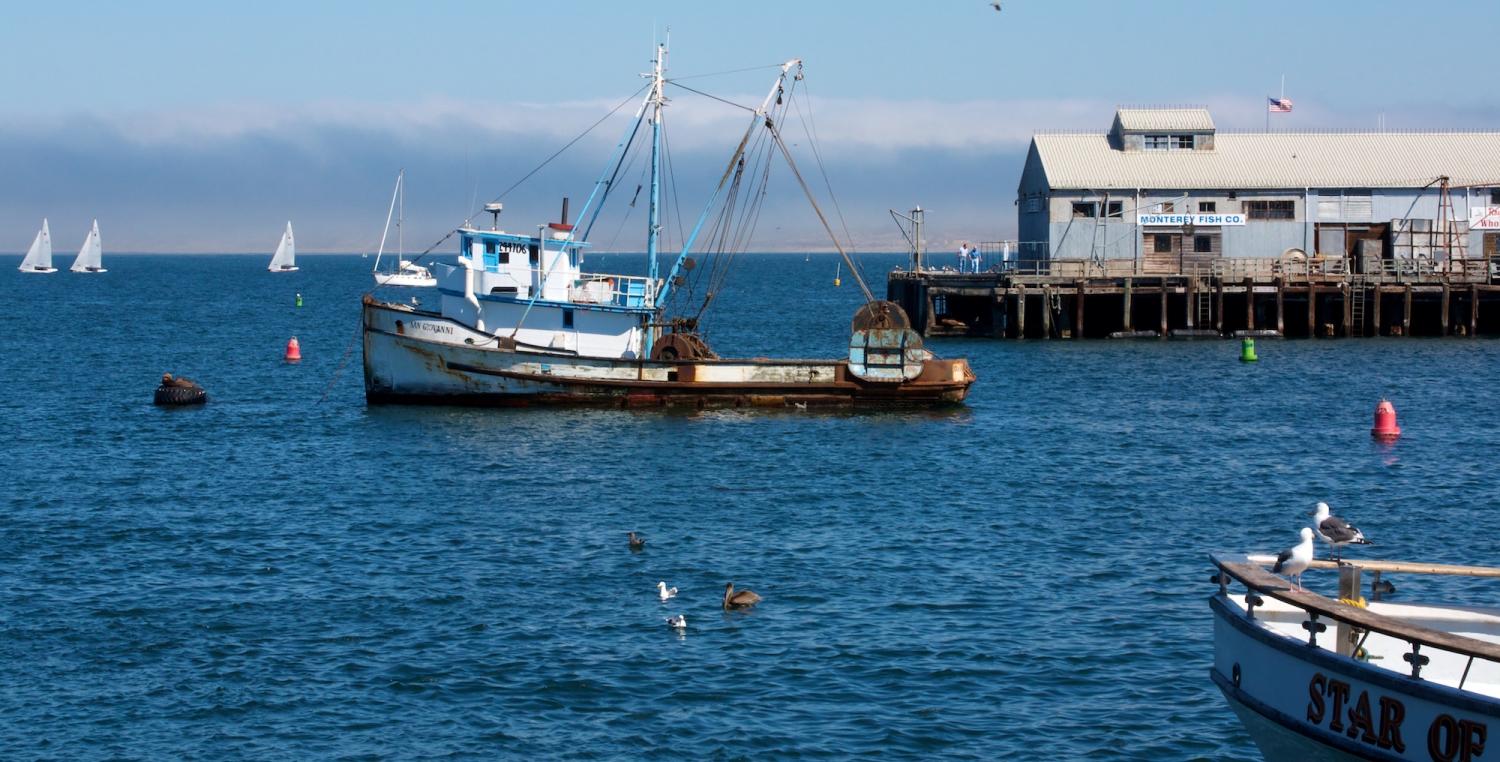

This is the first in our new series of articles on sustainable seafood. Please follow along on our main landing page here.
In many ways, the ocean is an open history book -- relaying grim tales of waste, pollution and shortsighted management of our planet's natural resources. The ocean covers 71 percent of the Earth's surface and contains 97 percent of its water, yet a growing number of factors continue to threaten the health of our oceans and, by extension, the sustainable future of our planet.
As the Earth warms, so do the oceans -- causing increasing rates of acidification that concern scientists and lawmakers alike. President Barack Obama noted acidification as a key climate-related concern in an Executive Order he issued last year urging Americans to embrace climate change awareness. Scientists note that acidification has happened before in Earth's history -- but never at such rapid rate. The most comparable event, which took place about 65 million years ago, is estimated to be 10 times slower than current acidification.
Though human activity indirectly impacts ocean health through climate change, direct actions may pose even greater concerns. To keep up with demand for certain species, massive commercial fishing vessels empty large swaths of water in one pass, then simply move on to another. Known as overfishing, the serial depletion of fish populations that leaves few adult fish to repopulate the seas, this phenomenon poses a real and imminent threat to ocean biodiversity -- which could endanger sea life all the way up the food chain and have potentially devastating effects on underwater ecosystems. Meanwhile, currents draw millions of tons of trash to an area the size of Texas in the Pacific Ocean, known as the North Pacific Gyre or trash vortex, where it swirls in perpetuity and grows larger by the day.
Outspoken consumer advocacy, thoughtful legislation and greater industry transparency can go a long way to ensuring a healthier ocean for our children. But another factor may play an even greater role in determining a brighter future for the world's fish -- the power of story. Indeed, each fish we encounter has a story. Where did it come from? Who caught it? How many miles has it traveled before arriving on your plate? Answering questions like these with confidence empowers stakeholders at every step of the value chain -- from fishermen and farmers to buyers, restaurants and consumers -- and not only offers a reason to care about ocean health, but also gives them the tools they need to make an impact.
Take chef, sustainability advocate and Harvard lecturer Barton Seaver as an example. As a restauranteur, the Washington, D.C. native moved beyond the standard seafood fare served up at most American eateries. By embracing his product in a holistic way and sharing the stories behind the fish he served, Seaver was able to sell the "bait," or lower-quality stock, from his shipments for $28 a plate and sell out in mere hours. His former D.C. restaurant Hook was named by Bon Appetit magazine as one of the top 10 eco-friendly restaurants in America, and he went on to become director of the sustainable seafood program at Harvard University.
Likewise, Sea to Table, a small family business in New York City, has made a name for itself by buying from artisanal fishers and selling to restaurants with a complete story attached to each shipment of fish.
For an idea of how stories can make an impact on a larger scale, take Steve Vilnit, director of fisheries marketing at the Maryland Department of Natural Resources and an unsung hero of the Chesapeake Bay. In his role at the Maryland DNR, it's Vilnit's job to help local fishers sell their product for more money. In doing so, he founded two grassroots programs that are exemplary of the power of story and the difference telling these stories can make.
Like many species in America, most crab sold as Maryland Blue Crab is mislabeled. Picking up on this unfortunate trend, Vilnit started an approval and referral program with the state to confirm that restaurants and other outlets were selling real Maryland crab. After spending about $800 on hats and stickers, he wound up reclaiming $7 million in local sales from distributors who were importing Indonesian crab, processing it in the state and labeling it as "from Maryland."
With a second program, aimed at reducing the snakehead fish population in the Chesapeake Bay, Vilnit succeeded in transforming what was once a disruptive and threatening invasive species into a money-making machine for local restaurants and suppliers. Vilnit worked with a group of fishers to figure out how to best catch the species (as it turns out, a bow and arrow is the best strategy) and assembled a network of restaurants and chefs to build a market for the fish. Today, the snakehead is a sought-after sushi fish that retails for somewhere near $29 a pound -- all because one man helped the market build a compelling story.
Over the next four months, Triple Pundit will tell many more seafood success stories with the support of lead sponsor Future of Fish. In an in-depth series, we'll explore what makes seafood sustainable and how fisheries and stakeholders prioritize competing issues to minimize impacts on people and the planet. If you miss an installment, you can catch them all here.
Do you know a business or organization with a compelling seafood success story to tell? Send it to [email protected] for a chance to be featured in an upcoming story!
Image credit: Flickr/jay galvin
'Tech Backlash' Perfect Time for Silicon Valley to 'Disrupt' CSR
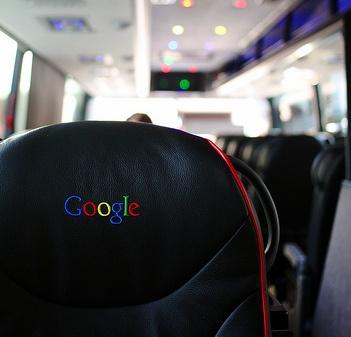

In an article posted last month on Salon.com, Julia Carrie Wong outs Silicon Valley for a lackluster response to the tech backlash embodied by protests of Google employee buses in San Francisco. She says “charity is not enough” and rightfully points out the relative stinginess of “community benefit agreements” that the city signed with tech companies in exchange for tax breaks. And while skyrocketing rents and higher-than-average eviction rates have their roots in a long-term housing shortage caused by intense bureacracy and local opposition to new developments, the effects of a booming tech industry in an otherwise slow-moving economy are very real in the Silicon Valley.
But to charge that tech companies and their now infamous employees are THE cause of displacement and gentrification seems misguided. It begs the question: Exactly how should tech companies be responding to their outsize effect on the local economy?
Protests against rising rents and evictions in San Francisco have not fallen on (completely) deaf ears. Salesforce.com founder Marc Benioff has publicly urged other tech CEOs to give more back to the community and just announced the formation of a new initaitive called SF Gives. Formed in partnership with nonprofit Tipping Point, SF Gives aims to raise $10 million for local anti-poverty programs over the next 60 days through donations of $500,000 apiece from 20 companies. But Benioff also told the SF Chronicle that not everyone in Silicon Valley is on board: “We still have some pretty epic companies that have had IPOs and aren’t giving….There is a dark side here.”
The tech industry is a bubble, and I don’t mean in an financial sense. Companies like Google and Facebook are situated in sprawling campuses that have pretty much every service their employees might need as they clock long hours: on-site gyms, dry cleaning, free lunch and dinner (which means working through dinner is a regular occurrence!), and of course, shuttles to ferry their precious human capital to and from work. Tech employees travel in similar social circles, are regularly poached from competing companies in incestuous cycles and don’t exactly have a reputation for being socially well-adjusted.
This insular mentality is reflected in the out-of-touch approach to charitable giving of some big-name tech firms.
Twitter, for example, signed a “community benefit agreement” (CBA) as part of the deal that included huge local tax breaks from the city. Part of the agreement includes $60,000 worth of “promoted tweets” to be donated to nonprofits -- a nice gesture, but hardly a burden to Twitter or a game-changer for nonprofits. Their CBA also includes a total of $388,000 in cash donations to local nonprofits. As Ms. Wong points out in her Salon Article, that’s just 0.69 percent of the tax benefit the company receives.
New initiatives like SF Gives highlight both the potential benefits and challenges of meaningful community contributions from the world of tech. And of course in comparison to other high-profile corporate contributors like Big Oil, Big Tech is a relatively new feature on the economic stage that is just starting to encounter pressure to give back more of its bottom line.
Yet it is still worth noting that to date we have only seen business-as-usual corporate philanthropy coming from an industry that defines itself as an army of “innovators,” “connectors” and “disrupters.”
Where is the innovation and disruption in their social responsibility programs?
Image credit: Flickr/eblaser
Is There a Sustainable Big Mac in Your Future?


Giant corporations such as McDonald's and Walmart cast a long shadow across the planet with the enormous amount of resources that they use, process, consume and sell. McDonald’s flips and bags 70 million hamburgers every day and is responsible for a full 2 percent of the world's beef consumption. So when you consider the impact that beef production has on the environment, particularly with regard to climate change, a move by them to sustainable beef could be a really big deal.
After all, according to a 2009 article in Scientific American, the meat industry was, at that time, responsible for somewhere between 14 and 22 percent of all greenhouse gas emissions. So, the article says, if you drove your 3,000-pound car five miles to buy a hamburger, the emissions given off by producing the meat for that burger were equivalent to those given off by your car as your drove there and back home again.
That report, which came from the U.N.'s Food and Agriculture Organization, turned out to be significantly understated. An updated analysis performed by the World Bank, which was published in Forbes of all places, showed that the more accurate number is closer to 51 percent. That means you'd have to drive somewhere between 23 and 36 miles to equal that patty's footprint.
In fact, the article goes so far as to say that replacing meat with with alternative foods such as dairy products and soy analogs, for people around the world would, “have far more rapid effects on greenhouse gas emissions and their atmospheric concentrations — and thus on the rate the climate is warming — than actions to replace fossil fuels with renewable energy.”
So McDonald's pledge to switch to sustainable beef production starting in 2016 could have a huge impact, depending, of course, on what they mean by sustainable and how different emissions figures would be compared to those produced today. Considering the fact that Walmart is also making similar noises the stakes are even higher.
Clearly, McDonald's is not talking about substituting beef with soy analogs. So says Bob Langert, vice president of global sustainability for McDonald’s in an interview with Beef Magazine: “Beef is at the core of what we do past, present and future. We want the beef industry and McDonald’s to prosper as a result of ensuring that beef is sustainable long-term.”
Nor are they talking about switching to local, organic or GMO-free options that are generally regarded as more sustainable than conventional beef production.
“That doesn’t get us where we need to go. The definition needs to be holistic and account for people, the environment, food safety, animal welfare and economics. It’s multi-faceted.”
That sounds like quite a tall order. So what exactly do they intend to do? Where, if I may ask, is the beef?
The fact is, they don't know yet. They are hoping that their supply chain, fellow members of the Global Roundtable for Sustainable Beef (GRSB), will help them figure it out. But they seem to have a pretty good idea what they want the answer to look like.
“Sustainability should be mainstream; it’s not niche, it’s not premium,” says Langert. “The customer wants it and wants to do business with companies that share their values. They want to see companies like ours and those of our suppliers also doing things with a sense of purpose, that we’re not in business just to make money but we’re here to serve them with food that is safe, affordable, high quality and now sustainable for our customers.”
So they want to be on the right side of history, so to speak. But it's not at all clear what they are willing to do or give up to get there.
When you consider the fact that, historically speaking, sustainability in this industry has meant continuing profitability, with more emphasis on keeping ranches in Texas from going underwater financially than anything to do with island nations like the Maldives, sharing their homes with starfish, there seems to be a bit of a disconnect here. So it might be premature to start breaking out those bottles of organic champagne just yet.
To get a sense of what kinds of things the company is looking at and thinking about, it might be instructive to consider some of the talking points that the Sustainable Beef Resource Center has published. In response to questions regarding the use of growth enhancing technologies (i.e. growth hormones and antibiotics), the center cites a study that found, using computer modeling, that raising the same amount of beef as we consume today, without the benefit of these technologies, would require substantially more cattle, more land, more water and would generate far more greenhouse gases -- 18 million more metric tons in the U.S. alone. So, using this logic leads them to assert that using growth hormones is the more sustainable choice. From there, they go on to say, that if production in the U.S. were to fall off, other countries would pick up the slack, leading to both economic hardship here at home and environmental disaster in places like Brazil, where, they claim 16.9 million more acres of rainforest will be cut down, leading ultimately to the emission of some 3 billion tons of CO2 being released into the atmosphere.
The problem with this kind of scenario-based analysis is that it's a bit like writing science fiction. It all depends on the kinds of assumptions that are fed into the model. For example, there is the assumption that demand will remain constant in the developed world and will grow to equal that in the developing world.
That is the same argument that asserts that renewables will never be sufficient to meet the projected energy demand, which has fallen considerably in the past decade. It's the one that claims we need nuclear power without taking into account changes in behavior and improvements in efficiency. It's the argument that Monsanto likes to use, pointing at population growth, and saying that only by using genetically modified food can we possibly produce enough food to feed all of those mouths.
All of these are supply-side techno-fixes, that ignore the possibility of changes on the demand side despite a growing awareness and commitment among consumers to make changes on their end of the transaction, that brush away concerns about the inherent risks in their approach, and completely ignore fresh alternatives that a broader, more holistic view of the problem may have spawned.
But this is all beside the point, which is that beef production as it stands, has a huge impact on climate change and that focusing on how much worse things would be without hormones is a smokescreen intended to divert attention away from that fact.
Other SBRC talking points, in the same publication that says feedlots are fine because they are legal, claim that the methane produced in the U.S. from beef production in 2001 was responsible for only 2 percent of total greenhouse gas emissions. They fail to mention that methane is anywhere from 21 to 73 times more potent than CO2 in its heat-trapping potential depending on the time frame being considered, which means beef production is responsible for far more than 2 percent of the impact.
Whatever steps McDonald's ends up taking to earn a sustainable label from an association in which they are a dominant member will be helpful, but they will also likely be small. We can look forward to seeing them wrap themselves in sustainable colors and send out messages that those who covet their advertising dollars will be happy to spread.
I hope to be proven wrong on this, but my guess is, come 2016, that you'll be able to get that same burger with a good size helping of greenwashing on the side, no extra charge.
RP Siegel, PE, is an inventor, consultant and author. He co-wrote the eco-thriller Vapor Trails, the first in a series covering the human side of various sustainability issues including energy, food, and water in an exciting and entertaining format. Now available on Kindle.
Follow RP Siegel on Twitter.
Mars Inc. Raises the Bar for Sustainable Palm Oil
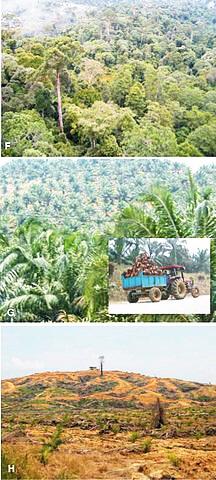

Mars Inc. is upping the ante regarding the sustainable palm oil market. The manufacturer of the popular chocolate candy bars Mars Bar, 3 Musketeers and Twix announced its commitment yesterday to transition to 100 percent certified sustainable palm oil in its products by the end of 2014.
At present, Mars adheres to the guidelines of the Roundtable of Sustainable Palm Oil, which allows it to purchase sustainable palm oil in accordance with the organization’s “mass balance program.” The program is set up to assist companies as they transition to fully certified sustainable oil, by allowing them to mix the sustainable oil they purchase with conventional sources. According to the RSPO, it also helps support the fledgling sustainable palm oil market, by upping the demand in a way that can be met by suppliers.
“We will continue to source 100 percent RSPO mass-balance certified palm oil, but we are now strengthening our commitment as follows to ensure this palm oil is genuinely sustainable,” the company said in its press release.
To do this, it plans to “go beyond the RSPO criteria” by setting its own benchmarks for suppliers. According to Mars, suppliers must guarantee that their stock:
- Comes from traceable, legal sources
- Doesn’t exploit areas under conservation or high carbon stock forests
- Doesn’t come from peat areas “regardless of depth”
- Isn’t produced in areas where the land was burned to make way for new development
In addition, it underscores the rights of communities in the area to make decisions and “withhold their free, prior and informed consent for plantation developments on land they own legally, communally or by custom” and sets boundaries to ensure that human rights of workers are upheld.
“Mars has introduced a new sourcing charter that will require all its suppliers to have a fully sustainable and traceable palm oil supply across all their operations by the end of 2015 (or to have plans in place by the end of 2015 for doing so) and to have confirmed their commitment to the principles in its sourcing charter by end 2014,” the company said.
While all of these topics are addressed by RSPO, Mars’ wording in some cases goes further. RSPO for example, sets out a course by which to decrease impact on high carbon stock forests, while the company’s commitment moves its goalposts past that point. It has also said that it will not allow burning to be used in any instances of clearing, where the RSPO has set out a progressive plan allowing for controlled burns under limited circumstances.
In addition, the company has set a goal of 100 percent traceable oil back to supplying mills by the end of 2014. This puts it in league, with other food manufacturers striving to reach sustainability by the end of 2015. And hopefully, says Barry Parkin, chief sustainability officer for the company, it will encourage others to step up their move to certified sustainable palm oil.
"Rapid expansion of palm oil plantations continues to threaten environmentally sensitive areas of tropical rainforest and carbon-rich peatlands, as well as the rights of communities that depend on them for their livelihoods … We believe that these additional measures will not only help build a genuinely sustainable pipeline for Mars, but will also help accelerate change across the industry by encouraging our suppliers to only source from companies whose plantations and farms are responsibly run,” Parkin said. The Forest Trust, of which Mars says it is now a member, is helping the company set up its framework for sustainable sourcing.
Like many candy manufacturers, Mars has come under pressure recently from consumer groups to upgrade its palm oil sourcing procedures. And organizations like the Union of Concerned Scientists, which just developed a scorecard to rate packaged food, personal care and fast-food companies on their progress has added a further incentive.
With so many manufacturers climbing on board, more expansive listings in the vein of what the UCS has developed may soon be necessary to keep track of progress. But it sure is good to see companies like Mars stepping up to the plate.
Image of Mars Bar: Taken by Asim18
Image of progressive deforestation for palm tree plantation: Sandra Díaz
Policy Points: Spilling Light on Poor Toxic Chemicals Regulations
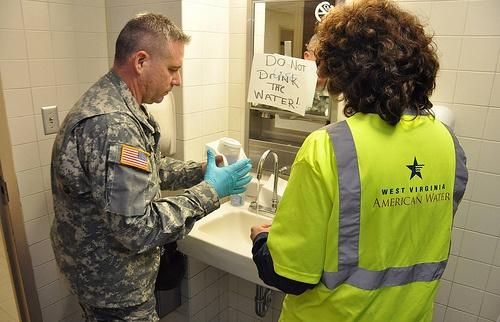

By Bryan McGannon
If you needed a reason to take chemical reform seriously, you got it in the form of the Elk River chemical spill in West Virginia in January. Besides the human cost, which left many communities without running water for days and made residents sick from the chemicals, there were massive business and economic impacts. According to the Center for Business and Economic Research at Marshall University, businesses in the Charleston, W.Va. area lost about $61 million (PDF) in just the first week after the spill.
Or perhaps we can look to North Carolina and the massive spill that dumped nearly 40,000 tons of coal ash into the Dan River on Feb. 2, coating 70 miles of the river with toxic contaminants such as arsenic, mercury and lead.
These accidents shine a spotlight on the potential for damage from poorly regulated toxic chemicals. But, in fact, they only hint at how poor current regulations really are for these chemicals.
Of the 80,000 chemicals currently being produced, the U.S. Environmental Protection Agency has been able to test only 200 — 0.25 percent of the chemicals on the market.
The Toxic Substances Control Act (TSCA) was intended to give the EPA the power to identify and regulate toxic chemicals when it was passed in 1976. The law grandfathered 62,000 chemicals already on the market in 1976, exempting them from regulation. And a 1980s court case rendered the law ineffectual by forcing the EPA into analytical loops to meet the unworkable cost/benefit standard in the law. Unfortunately, the law has not been updated since.
The good news is that there is now broad agreement, even among members of the chemical industry, the government and health and environmental advocates, that TSCA needs to be reformed. The bad news is that there is strong disagreement over how to do so. Two bills have been introduced, the Chemical Safety Improvement Act in the Senate and the Chemicals in Commerce Act in the House of Representatives. Both are unnecessarily complicated and riddled with provisions that would stall or delay effective regulation. The bottom line is that they would not be good for the majority of businesses in this country.
In December of last year, a number of companies, and the American Sustainable Business Council and other business organizations, formed the Companies for Safer Chemicals coalition. The company members include Patagonia, Seventh Generation, Method and Eileen Fisher, and business organizations from the South Carolina Small Business Chamber of Commerce, Sustainable Furnishings Council and Social Venture Network. The coalition represents great diversity, but it is united in the belief that meaningful, comprehensive reform can drive innovation for cleaner and safer products, protect the consumers and communities, and meet growing consumer demand that will in turn foster economic and job growth.
Specifically, these businesses support three main principles as part of any TSCA reform:
- Transparency. The public and businesses should have access to information regarding the safety of the chemicals in the products they use.
- Safety. Federal law should set a minimum acceptable safety requirement, but allow and encourage states to create innovative laws and regulations that further protect human health and the environment.
- Innovation. Chemical management should foster solutions that lead to safer and more sustainable products and technologies not codify the status quo.
It’s clear that the business perspective on TSCA reform is not monolithic. Incumbent industries call for legislation that would end up exempting some chemicals from effective regulation. But a growing number of companies are making the business case for strong, meaningful reform that will lead to safer chemicals and products.
Requiring all chemicals be treated equally will give all manufacturers a level playing field. And as we have seen recently in West Virginia and North Carolina, not taking these steps can have severe adverse effects — not just for communities, but for the businesses and ultimately the state and national economy.
Unfortunately, some members of Congress have proposed changes that would ultimately fail to address these principles. In the case of the House discussion draft introduced by Rep. John Shimkus (R-IL), the legislation calls for the EPA to consider the cost impacts of regulating a substance rather than the hazard caused by the substance. In fact, the cost basis is at the core of the court case that rendered existing law ineffective. This draft is proposing to fix a broken law with the same provision that broke the original law.
Guided by good science, legislation can drive business innovation and success — and protect public health at the same time. That is the kind of TSCA reform we want to see, and the kind we will keep pushing for. If we do not, incidents like the Elk River and Dan River spills will continue, and businesses and communities will continue pay the price.
Image credit: Flickr/The National Guard
Bryan McGannon is Deputy Policy Director for the American Sustainable Business Council. Policy Points is produced by the American Sustainable Business Council. The editor is Richard Eidlin, Director – Public Policy and Business Engagement.
Unilever CEO Paul Polman Pockets Extra $722K for Sustainability Work


Proving that being green really can get you more of that other green stuff, Unilever CEO and leader in corporate sustainability Paul Polman received a £431,775 ($722,230) bump to his already hefty annual bonus in large part for his work on the company’s sustainability goals.
As Bloomberg reported earlier this week, in Unilever’s Annual Report the Board of Directors mentioned Polman’s “leadership, including progress against the delivery of [Unilever Sustainable Living Plan] goals and his overall contribution to making sustainable living commonplace,” as a factor in choosing a 137.5 percent “personal performance multiplier” on his year-end bonus.
In comparison, Unilever’s CFO, Jean-Marc Huet, received a 110 percent personal performance multiplier.
Among his fellow multi-national CEOs, Polman has been one of the most vocal proponents for integrating environmental and social goals into overall business planning. The Unilever Sustainable Living Plan was formed under his watch and aims to halve the company’s environmental footprint by 2020, among other metrics. He has also broken away from the pack in his approach to shareholder duty. Rather than focus exclusively on shareholder returns, he has actively sought out the kind of investors that agree with his “build a bigger pie” approach to business, which emphasizes the long-term value companies can reap from a more environmentally and economically stable world.
Sure, preaching the gospel of sustainability wasn’t the only thing that earned Polman a bigger bonus slice this year. He is also just a good CEO on conventional terms. Underlying sales growth for Unilever in 2013 was 4.3 percent, a solid showing in a tumultuous year, and core operating margin was up 0.4% percent higher than expected, to reach 14.1 percent. Net profits were up 10 percent compared to the previous year.
Polman was certainly rewarded for his strong performance. His total remuneration for 2013 was just shy of €8 million ($11 million) — including bonuses (which accounted for about a quarter of the total) and share awards — far above average his continental counterparts.
According to 2012 data from the AFL-CIO, the average pay for a CEO in the United Kingdom and the Netherlands (Unilever is an Anglo-Dutch company) was $3.8 and $3.6 million, respectively. This means average CEO pay was 84 and 76 times the average worker’s salary in those respective countries.
That ratio still pales in comparison to the U.S., where the average CEO earned $12.3 million, or 354 times the average American worker in 2012.
Currently, Unilever’s sustainability plan does not include any metrics or goals around income inequality.
Image credit: Flickr/Minister-president
SC Johnson expands crusade against dengue and malaria


SC Johnson says it is expanding its dengue and malaria prevention initiatives in India, Malaysia, Indonesia, Brazil, the Philippines, Mexico, Costa Rica and Vietnam.
The household products and pest control company implemented a global campaign called “Fight Dengue for Your Family” last year that serves as a call-to-action, motivating families to take precautionary measures on disease prevention and to make a difference in the lives of children.
According to the World Health Organization (WHO), the incidence of dengue has increased 30-fold in the past 50 years.
In Indonesia, this year, the company is working with the Indonesian Association of Public Health Experts to train “children larvae busters” who can serve as agents of change in their communities and educate fellow students and their families about dengue prevention. The program aims to reach 200 children across 50 schools.
In Brazil SC Johnson will launch “Fight Dengue for Your Family” for the first time in Ribeirão Preto, Brazil’s flagship region for dengue prevention. In partnership with the government, three private schools and a local NGO called Saúde Solidária, the company is participating in educational rallies and school programs.
“As a global citizen and expert in pest control products, we have a responsibility to play a key role in increasing awareness of these diseases in communities around the world and providing access to quality education resources,” said Kelly M. Semrau, senior vp – global corporate affairs, communication & sustainability for SC Johnson.